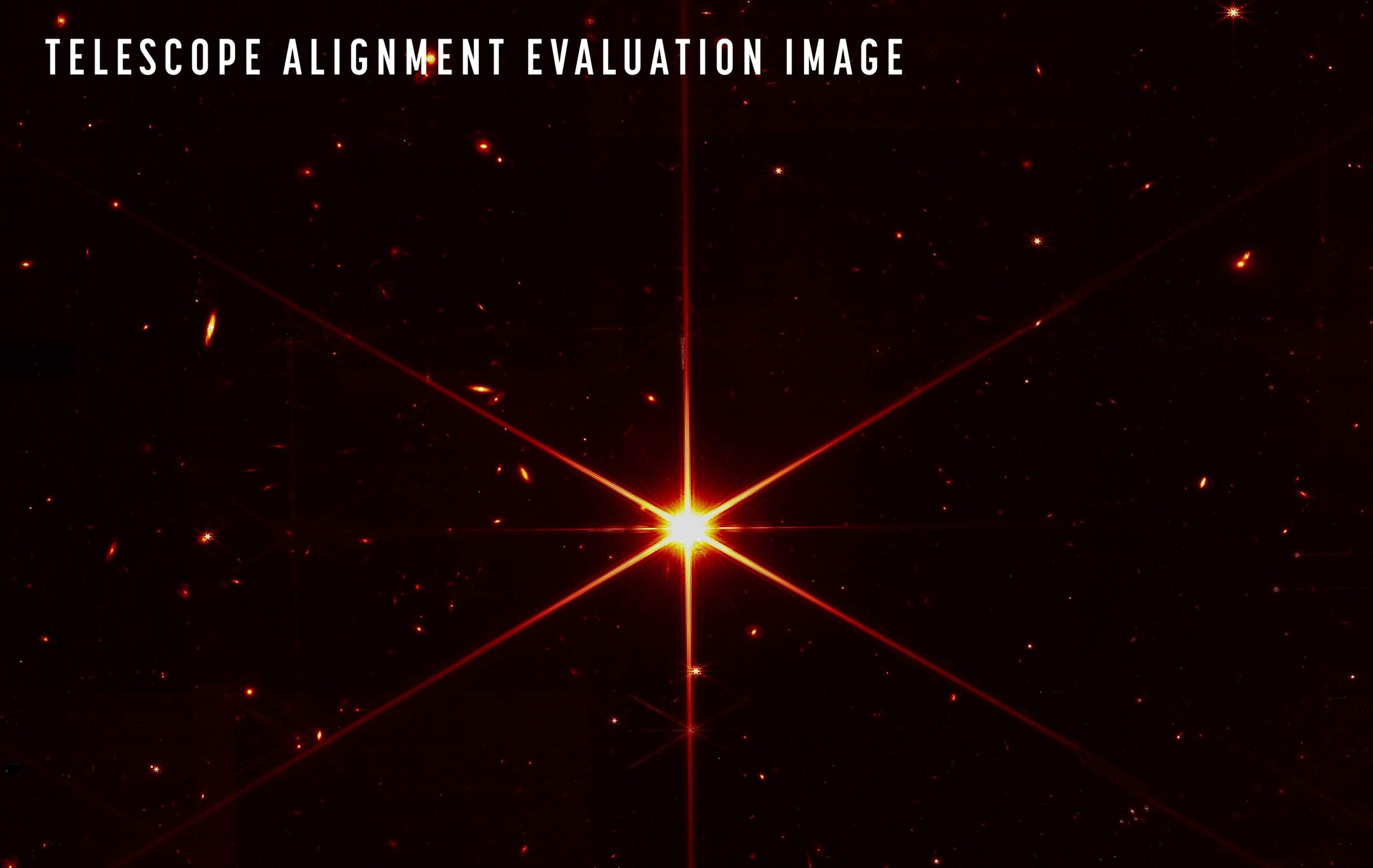
NASA said that the initial focusing stage of the main mirror of the James Webb Space Telescope has been successfully completed. Recently, the image of the target star from all 18 segments was reduced to one, and now focusing has been performed.
Interestingly, when the specialists finished focusing the mirror, they were surprised by the unexpectedly high definition. The sensitivity of the equipment and the overall performance of the project turned out to be so high that the results of future observations promise to exceed all expectations!
As you can see in the image below, images of distant galaxies are visible in the background of the target Star that the primary mirror focused on. One of them is located at a distance of about 5 billion light-years from us, and these are only the first and rather primitive observations of this space observatory.

What’s next?
The main mirror of James Webb has yet to undergo a series of fine-tuning, which the telescope team expects to complete no later than early May. After that, the stage of fine-tuning the telescope’s scientific equipment will begin near-and mid-infrared receivers, as well as a spectrograph.
However, even at the current stage, scientists can confidently say that there are no significant obstacles in the optical channel of the telescope from the mirror system to the image receivers, and the equipment works beyond praise.
Space selfie
NASA has also published a new telescope selfie. The image was taken from the adjustment camera of the NIRCam infrared device. Instead of the image of the palate, this node captures the uniformity of ‘illumination’ of each of the 18 segments of the main mirror. The selfie shows the difference in the gaps between the segments. In the coming months, calibration will take place so that the segments become almost a whole.

The first scientific observations – the first most accurate images of the sky – the James Webb telescope will begin transmitting to Earth from the beginning of summer. Its instruments will be able to look even further into the universe at the time of the birth of the first galaxies and even the first stars.
Today, theories of the evolution of the universe of these stages no longer correspond to the observations of astronomers. Many of the observed processes occurred much earlier than the calculations show. It’s impossible to explain right now, but “James Webb” should help with that.
In fact, we are on the verge of many discoveries in astronomy, and even on the verge of a real revolution in space exploration.

